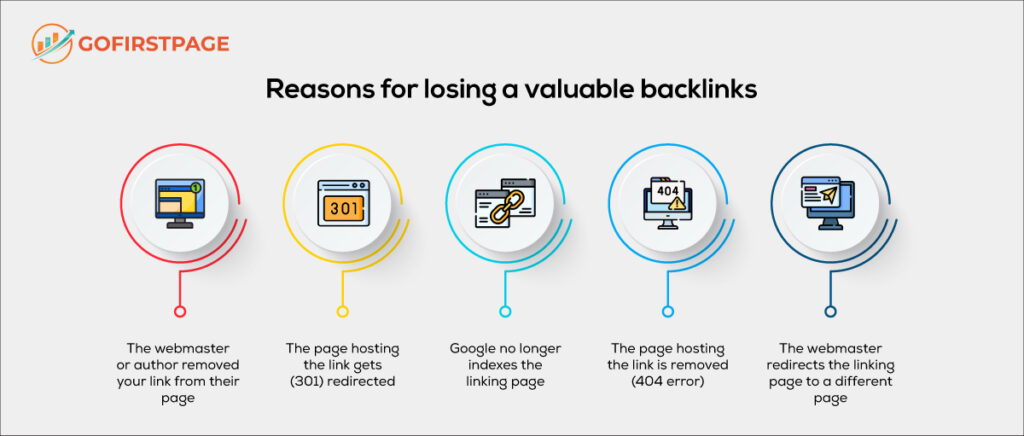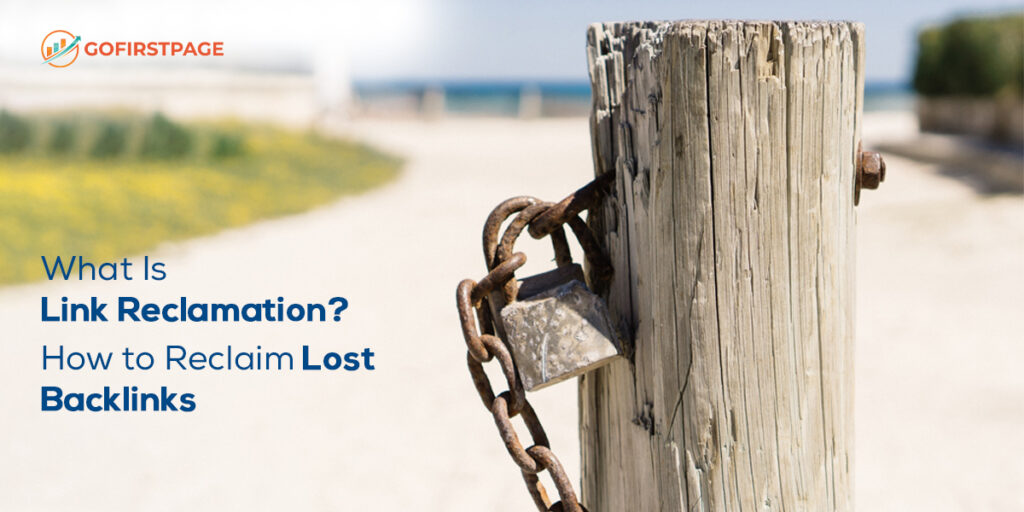Imagine you’ve worked hard to build a beautiful sand castle on the beach, but then the tide comes in, and parts of it are washed away. It’s just like a lost grain of sand but in the digital world. In the world of search engine optimization (SEO), link reclamation is a powerful tool that helps you restore lost or damaged backlinks to your site.
Building links isn’t easy, so when your hard-earned links suddenly vanish, or you find a broken backlink, it can be frustrating, devalue your SEO efforts, and damage your site’s overall credibility. Link reclamation is an essential part of best SEO solutions, but it can be intimidating if you don’t understand what is link reclamation, why it’s important & how it works. Let’s dive in…..
What is Link Reclamation?
Link reclamation is the process of finding & replacing lost or broken links to your website and taking the necessary steps to fix and reclaim lost backlinks. These links are also known as “dead” and include internal links and backlinks. It is significant in maintaining your SEO rankings, regaining your link value, and getting the most out of your profile.

Link reclamation is the process of identifying those lost links & getting them back. Often, these might be highly useful links, perhaps contextual backlinks from appropriate sites, which greatly improve a website’s performance in SERPs.
Example of a lost link
An example of a broken or lost backlink occurs when a clickable anchor text on the hosting page leads the user to a 401 error page. Suppose you run a popular blog about healthy eating and noticed that a reputable health website once linked to one of your articles. However, that link has broken over time due to changes on the other site.
To reclaim lost backlinks, you contact the website owner, explain the issue, and request that they update the link to your current and relevant content. If successful, this link reclamation effort can boost your website’s SEO and bring more traffic from its audience. To make it easy, refer to the SEO service near me to connect with top experts. Remember, if your site has broken links, it not only gives your user an interrupted user experience but also means that your link has lost its value and purpose.
When Should You Use A Link Reclamation Strategy?
Link reclamation is usually required when links are lost or broken. There are various reasons why links may be lost:
— Broken link: A 404 error page is sent to users when a broken URL is encountered. This often happens when a website changes its URL structure without properly configuring 301 redirects.
— Link removal: This typically happens when the author of the external article removes your link from their website after finding a more up-to-date source or when your competitors are running link-building outreach campaigns.
— Redirect issues can be caused by a broken redirect chain link or an endless redirect loop.
— Expiration of low-quality links: These may be old links bought in the past from PBN (private blog networks) or links to low-quality websites that Google considers spam.
— Disappearing content: This situation occurs when a page linked to your website has expired & no longer exists on the web.
It’s not always a negative experience to lose low-quality links. These links likely weren’t contributing much traffic and may have harmed your SEO progress. However, if you’ve lost important links that were instrumental in establishing your page or domain authority, it may be worth trying to regain them.
How To Do Link Reclamation Effectively?
1. Identify Lost or Broken Links
Utilize SEO tools like Ahrefs, SEMrush, or Google Search Console to identify broken or lost backlinks. Look for 404 errors or instances where websites have mentioned your brand but not linked to your site. You can also take SEO services for small businesses from experts if you need any SEO-related assistance.
2. Prioritize Link Opportunities
Not all lost links are worth reclaiming. Focus on high-quality websites and pages with relevance to your content. Avoid connecting with pages that offer thin content, as it can harm your site authority.
3. Contact Website Owners
Track down the website owner or webmaster who is in charge of the linking page. You can find this information in your website’s “Contact Us” section or through tools like hunter.io.
4. Craft a Polite Outreach Email & Follow Up
Write a personalized and polite email explaining the situation. Mention the broken link and provide the correct URL to your content. Emphasize on mutual benefit of fixing the link. Send a follow-up email if you don’t receive a response after your initial outreach. Persistence can often yield positive results.
5. Use Social Media and Other Platforms
If email outreach doesn’t work, try reaching out through social media platforms like LinkedIn or Twitter. Some website owners may be more responsive there. If you are still facing issues in reclaiming your lost links, get guaranteed SEO services from experts.
6. Offer Relevant Value
If the website owner hesitates, consider offering something of value in return. It could be a guest post, web content writing services, a mention, or a collaboration opportunity.
7. Monitor Progress & Maintain Relationships
Keep track of your outreach efforts and the responses you receive. Use tools to monitor whether the broken link is fixed and replaced with a live link. Once the link is reclaimed, express gratitude to the website owner. Maintaining a positive relationship can lead to future collaborations and opportunities.
8. Regularly Audit Your Backlinks
Make link reclamation an ongoing part of your SEO strategy. Regularly audit your backlinks to catch new broken or lost links as they arise. Remember that successful link reclamation can improve your website’s SEO, drive more traffic, and enhance your online presence. However, it requires patience and persistence, as not all webmasters will respond positively to your requests. You can also connect with an SEO consultant for small businesses if you need any SEO-related assistance.
To Sum Up
If you want to have a successful website that shows up in SERPs, link building is probably one of the most difficult things you need to do. There are many ways to build and grow your website’s link profile, so SEOs and website owners should know all the different ways to optimize their link building. Link reclamation is one way to link build and SEO, and it can help website owners keep building and growing their backlink profile. This will help their website rank higher in organic search rankings, get more website traffic, and eventually get customers. Get 100 Dollars SEO services to strategize your website performance effectively
Frequently Asked Question
What is link reclamation?
Link reclamation is an SEO technique used to recover or repair broken or lost backlinks to your website. It involves identifying these links and taking steps to restore their functionality.
Why is link reclamation important for SEO?
Reclaiming links is a great way to make sure your website stays on top of SERP rankings by making sure your backlinks stay up and running. Plus, it helps keep your users happy by ensuring they don’t have to deal with broken links.
How do I find broken backlinks to my website?
You can use SEO tools like SEMrush, Ahrefs, or Google Search Console to identify lost or broken backlinks. These tools provide data on the links pointing to your site.
What steps should I take if I find a broken link redirecting to my website?
If you find a broken link, contact the website owner or webmaster responsible for the linking page. Politely inform them of the issue and request that they update the link to the correct URL.
Can link reclamation help improve my website’s rankings?
Yes, link reclamation can potentially improve your rankings. When broken or lost links are fixed, it can positively impact your website’s authority and SEO performance.
Are all lost links worth reclaiming?
Not necessarily. Focus on reclaiming links from high-quality websites and pages relevant to your content. Prioritize links that can bring meaningful traffic and authority.
What if website owners don’t respond to my link reclamation outreach?
If you don’t receive a response, consider sending follow-up emails or reaching out through social media platforms like Twitter, Facebook, or LinkedIn. Persistence can be the key to success.
Are there any tools that can automate the link reclamation process?
While there are tools that can help identify broken links, the outreach and relationship-building aspect of link reclamation typically requires a personalized approach and cannot be fully automated.
Can I use link reclamation for outdated content on my website?
Yes, you can use link reclamation for outdated or updated content. If you’ve significantly improved a piece of content, you can contact websites linked to the older version and ask them to update that particular link.
Are there any risks to be aware of when practicing link reclamation?
One potential risk is that some website owners may not be responsive or may decline your request. Additionally, it’s essential to ensure that the content being linked to is genuinely valuable and relevant to the linking website to maintain a positive online reputation.




